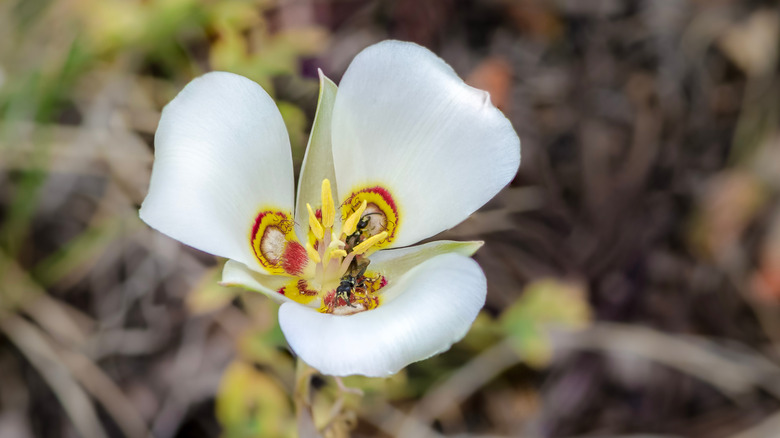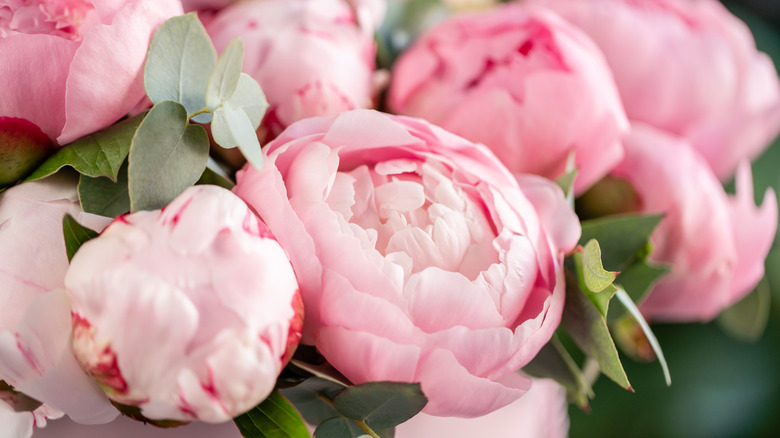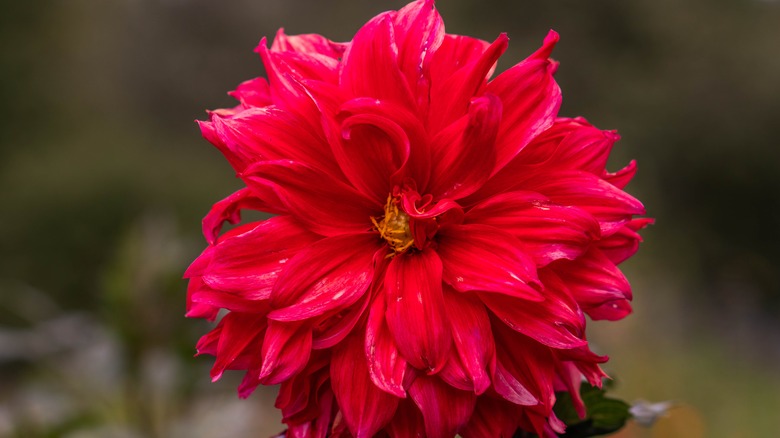15 Best Plants To Grow In USDA Zone 8
Choosing plants according to your USDA Hardiness Zone will let you sow with intentionality and guarantee that your crops will not wither away due to heat. It will also improve the odds of your garden thriving, allowing you to enjoy the fruits of your harvest for as long as possible. According to the United States Department of Agriculture, the USDA Zones are a planning tool that reflects a region's climate and growing season. They can then be cross-referenced with various plants' needs to determine if you should plant a particular species in your area — and when to begin propagation to maximize survival odds.
If you live in USDA Hardiness Zone 8, you're in luck. While you may find the heat difficult to manage, chances are that any warmth-loving plant will prosper in your garden. Plus, you'll get to enjoy a long harvest season! Not sure which plants would do best in your garden? We've rounded up our favorite plants that are sure to thrive!
1. Tomatoes
Home-grown tomatoes (Solanum lycopersicum) are the perfect juicy addition to a summer garden salad! However, since they are very sensitive to the cold, The Old Farmer's Almanac warns that Zone 8 gardeners should start their plants indoors or purchase young plants.
Bloom Season: Summer
USDA Growing Zone: 4 to 11
Growing Conditions: Full sun
Soil Type: Well-draining soil with neutral to acidic pH
Size: 2 to 3 feet tall
2. Peas
Pea plants (Pisum sativum) are a relatively low-maintenance crop. According to the University of Minnesota Extension, peas don't require much water, as long as it isn't too hot, or fertilizer. They're also able to survive the winter in most USDA zones, so chances are that they'll be back year after year.
Bloom Season: Mid-summer, fall
USDA Growing Zone: 3 to 11
Growing Conditions: Full or part sun
Soil Type: Well-drained soil with slightly acidic to slightly alkaline pH
Size: up to 5 feet tall
3. Corn
If you plant peas, you'll have to use stakes or trellises unless you grow them on corn — Zea mays — stalks! According to Easy Digging, this can help balance the plants' nitrogen and shade needs. However, be sure to harvest the corn promptly; The Old Farmer's Almanac warns that it quickly loses its sweetness.
Bloom Season: Summer
USDA Growing Zone: 4 to 8, via Morning Chores
Growing Conditions: Full sun
Soil Type: Well draining but moist soil with neutral or slightly acidic pH
Size: varies by variety, but generally 5 to 12 feet tall, per Iowa Corn
4. Kale
Kale (Brassica oleracea var. acephala) is a trendy, healthy, and easy-to-grow green! According to The Old Farmer's Almanac, it's also very tolerant of frost and can be covered with tarps in the fall to extend the harvest further.
Bloom Season: In Zone 8, fall and winter, via Bonnie Plants
USDA Growing Zone: 1 to 13
Growing Conditions: Full or part sun
Soil Type: Fertile and well-drained, with neutral or slightly alkaline pH
Size: varies by variety; leaves can grow up to 1 to 2 feet long, and plants can be 15 to 36 inches wide
5. Broccoli
In Zone 8, it's important to grow broccoli (Brassica oleracea var. italica) in the cooler spring months. According to Harvest to Table, warm weather will cause it to bolt, essentially producing seeds and then dying. While you shouldn't expect to eat homegrown broccoli year-round, it's still a very healthy addition to your garden.
Bloom Season: In Zone 8, spring, via Vegetable Gardening Online
USDA Growing Zone: 3 to 10
Growing Conditions: Full sun
Soil Type: Fertilized, well-drained soil with slightly acidic pH
Size: 1.5 to 3 feet tall
6. Onions
Another cold-loving veggie, onions (Allium cepa), can help fill your Zone 8 garden throughout the mid-late fall and early winter. West Coast Seeds says they're relatively easy to grow, making them an excellent option for new or hands-off gardeners.
Bloom Season: In Zone 8, spring
USDA Growing Zone: varies, but some varieties grow in all hardiness zones
Growing Conditions: Full sun
Soil Type: Fertilized, well-drained with neutral pH
Size: 10 to 30 inches tall; bulbs grow up to 6 inches wide
7. Mariposa lilies
Mariposa lilies (Calochortus) are the perfect long-term flower for beginner gardeners, especially those looking to increase their confidence. According to Plant Care Today, the flowers grow slowly but are easy to care for, making it satisfying to watch them develop over time.
Bloom Season: Midsummer
USDA Growing Zone: 5 to 10
Growing Conditions: Full sun
Soil Type: Well-drained, sandy soil with slightly acidic pH
Size: 4 to 8 inches tall
8. Daffodils
If it seems like squirrels are eating more of your homegrown produce than you are, daffodils (Narcissus pseudonarcissus) may be the solution. According to Dutch Grown, the flowers are a great squirrel repellant! However, think carefully before planting if you have pets or small children in your household. Per Plant Care Today, the chemicals from daffodils can be highly toxic.
Bloom Season: Spring
USDA Growing Zone: 3 to 8
Growing Conditions: Full sun, part sun
Soil Type: Well draining yet slightly moist soil with neutral or slightly acidic pH
Size: 0.5 to 2.5 feet tall
9. Peonies
With full, beautiful heads of flowers, peonies (Paeonia) can seriously improve your home's curb appeal. They're also relatively low maintenance — according to House of Hawthornes, mature plants only need to be watered every couple of weeks. That being said, since Zone 8 is quite warm, you may find your peonies needing a bit more water after the hottest days.
Bloom Season: Summer
USDA Growing Zone: 2 to 8
Growing Conditions: 6 to 8 hours of sun per day, ideally with partial shade
Soil Type: Well-drained soil
Size: 2 to 3 feet tall, via Miracle Gro
10. Bleeding heart
Bleeding heart (Lamprocapnos spectabilis) flowers are a unique addition to just about any garden. They get their name from their appearance since they look like a pink heart bleeding from its tip. According to Gardener's Path, you won't have to worry about too many pests, making bleeding heart flowers a low-stress way to decorate!
Bloom Season: Spring to summer
USDA Growing Zone: 3 to 9
Growing Conditions: Part sun, full shade
Soil Type: Well-draining with neutral pH
Size: 1 to 3 feet tall
11. Dahlia
Dahlia flowers (Dahlia spp.) are the perfect way to brighten your garden. Plus, according to The Old Farmer's Almanac, frequently cutting on dahlia plants encourages more growth. In other words, you'll have plenty of flowers to adorn your living room or give to friends!
Bloom Season: Summer, fall
USDA Growing Zone: 6 to 11
Growing Conditions: Full sun
Soil Type: Well fertilized, well-draining soil with slightly acidic to slightly alkaline pH
Size: depending on variety, anywhere between 1 to 7 feet tall
12. Lavender
Whether you're looking for beautiful garden decorations or aromatic ingredients, lavender (Lavandula) is always a soothing pick. Although the plant is known for its relaxing properties, American Meadows says it can also draw butterflies to your yard. Heads up, though — different varieties have different growing requirements, via Monrovia, so make sure that your chosen seeds will tolerate Zone 8 before planting.
Bloom Season: Late spring, early summer
USDA Growing Zone: 5 to 10, depending on the variety
Growing Conditions: Full sun
Soil Type: Lightly fertilized soil with neutral or slightly alkaline pH
Size: up to 3 feet tall
13. Marigolds
If you've decided to plant beans or tomatoes in your garden, marigolds (Tagetes) are an excellent companion plant. According to Pets Banned, they repel aphids, one of the most common garden pests. However, per the Clemson Cooperative Extension's Home & Garden Information Center, some aphids and spider mites will still cause issues for marigolds.
Bloom Season: Summer to late fall
USDA Growing Zone: 8 to 11
Growing Conditions: Full sun
Soil Type: Well-draining soil with neutral or slightly acidic pH
Size: 0.5 to 3 feet tall, depending on the variety
14. Mint
Whether you're up for a challenge or want to take things simple, mint (Mentha spp.) is willing to adapt to your preferred difficulty level. According to the Gardener's Path, mint seeds are notoriously difficult to germinate, making them the perfect project for a brave gardener. However, once you grow the seeds into a full plant or purchase one from a nursery, mint is very easy to maintain.
Bloom Season: Summer to Fall
USDA Growing Zone: 3 to 8
Growing Conditions: Full sun, partial sun
Soil Type: Well-draining with slightly acidic or neutral pH
Size: 1 to 3 feet tall
15. Basil
Another beloved herb, basil (Ocimum basilicum), pairs nicely with plants you're probably already planning to grow in your garden. According to Harvest to Table, planting basil near tomatoes and peppers can help the veggies grow!
Bloom Season: Summer
USDA Growing Zone: 4 to 10
Growing Conditions: Full sun, 6+ hours per day
Soil Type: Well-drained, loamy soil; not too much fertilizer or nitrogen
Size: about 1 to 2.5 feet tall, but some varieties can reach up to 6 feet















